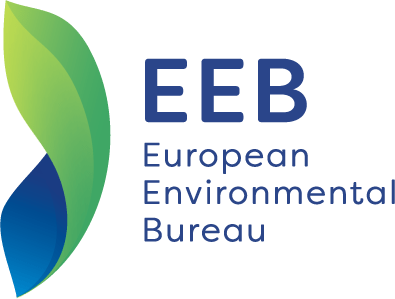Most EU member states miss collection target for electronic waste, NGOs demand quick action from European Commission
Electrical equipment provokes serious environmental impacts due to insufficient collection and recycling, short lifetimes, poor repair suitability, as well as illegal imports and exports.
NGOs and representatives of waste treatment operators call on the European Commission for a fast and fundamental revision of rules on electronic waste (WEEE Directive).
2019 data from Eurostat [1] show that 24 out of 27 member states fail to collect sufficient WEEE (Waste Electrical and Electronic Equipment) separately and therefore do not reach the EU target of 65 percent collection. Consequently, up to 4.8 million tonnes of WEEE are still improperly disposed of every year (e.g. into nature, residual waste streams or illegal exports) and are lost for reuse and recycling.
Countries such as Italy, Greece and Germany have collected particularly low amounts of e-waste, while Poland, Austria, Bulgaria and Croatia lead the way according to Eurostat.
Electronic devices have high environmental impacts throughout their entire life-cycle. Increasing consumption exhausts valuable resources, causes high energy demand and environmental damage during raw material extraction. At the end of life, improper disposal may lead to a release of harmful substances into the environment.
Environmental NGOs call to fundamentally re-regulate the handling of electrical appliances.
Fanny Rateau, Programme Manager at the Environmental Coalition on Standards (ECOS), said:
‘Eurostat data show that way too many electronics end up in landfills across Europe. The European Commission must overhaul the rules for electronic waste and put an end to the e-waste tsunami. The key to making electronics circular lies in their design phase. Electronics must be conceived from the start as long-lasting, toxic-free and easy-to-repair’
Mathieu Rama, Senior Policy Officer at RREUSE, said:
‘What this new set of data shows is that many EEE products that could be collected for preparing for reuse and serve the objectives of social enterprises providing job and training opportunities to disadvantaged groups, are actually leaking outside the collection regime. However, a WEEE collection rate based on EEE put on the market has its flaws. Policies encouraging the donation of these products to reuse social enterprises out of the waste regime, or consumers prolonging the lifetime of their products through repair, could actually be seen as hindering the achievement of this target. The EU urgently has to switch to waste prevention and preparing for reuse targets instead and try to limit the amount of EEE put on the EU market’.
Barbara Metz, Executive Director at Environmental Action Germany (Deutsche Umwelthilfe – DUH), said:
’Increased collection amounts are a key for reuse and recycling since only collected waste can be environmentally friendly processed. We demand that producers bear more financial responsibility to collect electronic waste through an obligatory participation in nation-wide networks for WEEE return for which collection and reuse targets should become legally binding. In this context, also online-platforms should be held accountable through full liability and due diligence for third- country-sellers, many of whom have so far evaded their legal obligations on registration and take back of electronic equipment’.
Stéphane Arditi, Director for Policy Integration and Circular Economy at the European Environmental Bureau (EEB), said:
‘While addressing WEEE lack of proper collection scheme is indeed a priority, we cannot forgo discussing the growing source of waste namely the digitalization of everything, and the resulting risk of exponential resource use and e-waste generation. Reducing unnecessary consumption of gadgets should also be a priority.’
Additionally, minimum quality standards to improve e-waste recycling, collection, logistics and preparation for reuse are urgently required. Looking at fridges and freezers alone, 6.3 million tonnes of CO2-equivalent emissions occur due to insufficient treatment practices every year [3]. NGOs call to use the CENELEC standards as a baseline for modern EU-wide requirements. These standards go back to a mandate of the EU Commission to enhance treatment of WEEE and have already been made mandatory in some EU countries.
The ball is now in the court of the European Commission to quickly present an ambitious draft for a revision of the WEEE Directive and ensure an environmentally-sound production, use, collection and treatment of e-waste throughout Europe.
ENDS
****
[1] Eurostat data
According to directive 2012/19/EU (WEEE directive), Member states must fulfil 65 percent of collected waste from Electrical and Electronic Equipment in 2019. Data from EUROSTAT published on 2nd of March shows, that only 24 Member States reached this target for 2019. Source: EUROSTAT, 2022.
[2] Background paper by 4 NGOs and representatives of waste treatment operators presenting 7 measures to revise EU legislation for Waste of Electrical and Electronic Equipment
[3] Call from 12 environmental NGOs and representatives of waste treatment operators for minimum WEEE management standards.
The call is supported by DUH – Deutsche Umwelthilfe, ECOS – Environmental Coalition on Standards, EEB – European Environmental Bureau, RREUSE – Re-Use and Recycling European Union Social Enterprises

